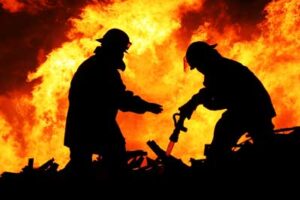 Every company that runs industrial equipment is aware of all the regular issues they could face if they don’t keep up with maintenance properly. Things like repairs and their costs, unplanned downtime, lost productivity, and so on.
Every company that runs industrial equipment is aware of all the regular issues they could face if they don’t keep up with maintenance properly. Things like repairs and their costs, unplanned downtime, lost productivity, and so on.
Whether it’s subconscious or not, every day that somebody puts off important maintenance tasks, they’re making a calculation — the damage/downtime I’m risking is worth today’s savings. We obviously question the wisdom of a decision like that, yet we can’t deny that it’s made on a daily basis.
But what people who put off maintenance fail to consider are the worst-case scenarios. We don’t mean two weeks of unplanned downtime as opposed to one week (though that’s bad enough). We’re talking about truly dire, disastrous consequences.
One such dire consequence, which occurs more often than you’d imagine, is fire.
Plastics can be highly flammable, a fact which one plastics manufacturer in southern Indiana learned the hard way.
In August of last year, their plant burned almost completely to the ground in a catastrophic fire. The facility, and nearly all of their raw materials, were destroyed. Fire department vehicles sustained damage, as did a neighboring business. Luckily nobody was hurt, though the business lost nearly two months of productivity.
The cause of the fire? Sparks from the motor of an industrial blower, which could have been easily avoided with periodic inspections.
In a quiet city in central Canada, a tire shop and service center caught fire.
Tires, once ignited, are incredibly difficult to put out. Worsening the blaze, and making it harder to fight, is that fact that the shop was packed with inflated tires, oil cans, hydraulic systems, and compressed air and gas tanks — all of which can, and in this case did, explode in heat.
The fire was bad enough for the tire shop. Making it worse is that another business, a steel construction company, shared the building. Their office was also completely destroyed. Other independent businesses nearby were threatened by the flames, though luckily firefighters were able to protect them.
The tire shop was never able to reopen. The cause of all this damage? A bearing in an air compressor, worn out from age, that caused some wires to overheat and start an electrical fire. Completely, 100% preventable.
This third example occurred in an oil processing facility. This one is a great example of how equipment failure is rarely a simple matter, but rather a cascading chain of related problems.
This facility had an updated preventative maintenance plan — which it did not implement — and had skipped multiple scheduled maintenance sessions. The negligence resulted in inadequate bearing greasing in the motor of a crude charge pump, causing excessive vibration and ultimately bearing failure.
That directly caused a coupling to burst and ricochet for 40 feet through the facility. Then the shaft deformed and was itself thrown from the pump. These failures worsened the vibrations in the system, which caused a pipe to shear and begin spewing crude oil, which promptly caught fire.
We can’t deny that these are all extreme cases. Just the fact that they exist at all, though, is proof positive that something as seemingly insignificant as an older bearing can cause catastrophic, business-ending damage.
And the worst part is that each of these scenarios could have been completely prevented by even the most basic predictive maintenance program.